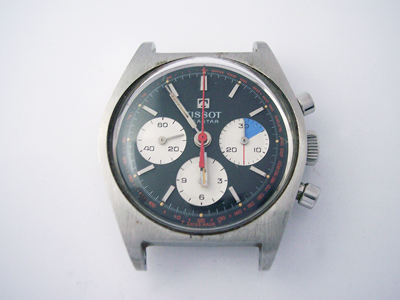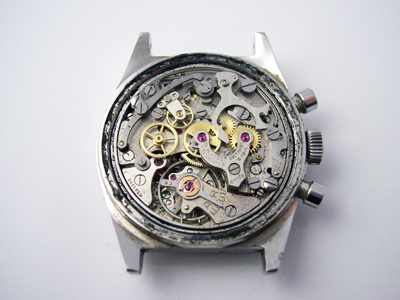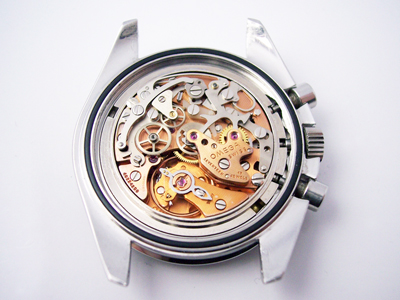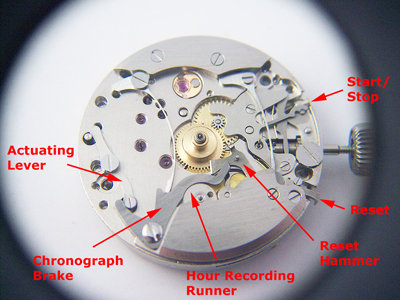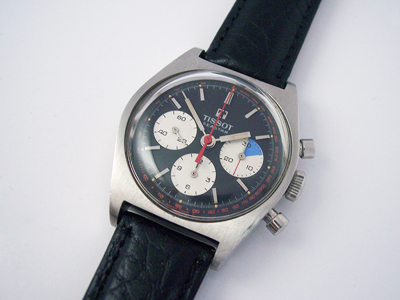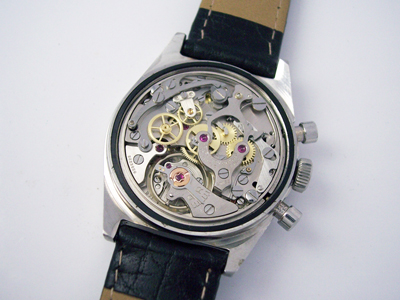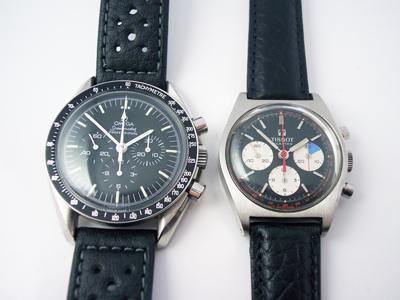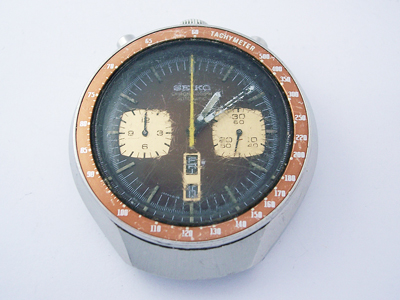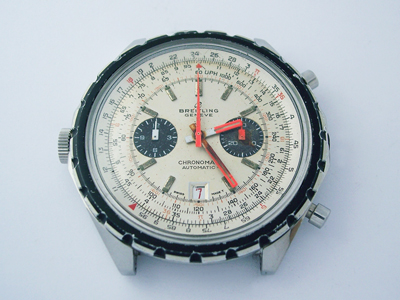Another great vintage chronograph on the blog, this time from Tissot.
(Click pictures to enlarge)
During the late 1960’s and 1970’s Tissot produced many attractive chronographs in the Seastar and Seastar Navigator ranges. The watch in this post is from the Seastar range, and is one of the more complicated models featuring a 12 hour chronograph.
Here’s an advertisement from 1969 showing the gold plated version of the watch, along with other watches from the same series – note that prices started at just $39.95, which sounds like a bargain, even for 1969.
Opening the caseback it was immediately obvious that the movement hadn’t been serviced for a long time, the caseback gasket was missing, and dirt had found its way into the case, and distributed itself around the movement.
The movement in this watch is the Lemania cal. 1281, produced at a time when movements and casing parts were being shared between Omega, Tissot and Lemania. Although the movements were all produced by Lemania, they were re-branded for Omega and Tissot watches, in this case the movement was re-branded as the Tissot cal. 871.
The cal. 1281 was developed further to become the Lemania cal. 1873, a calibre which was subsequently used in many popular vintage chronographs, one of the most well known being Omega’s ‘Moon Watch’, the Speedmaster Professional. The movement was re-branded as the Omega cal. 861, but the lineage back to the 1281 is clearly apparent if you compare the two calibres.
A few years ago, I wrote about another watch in the advertisement above, the model with a single chronograph subregister, powered by the Lemania cal. 1277 (see that post here). As the watch in this post has the additional hour register, let’s have a look at the extra components, all of which are located under the dial.
Towards the bottom of the picture is the hour recording runner which, like in many chronograph designs, is powered directly from the mainspring barrel when engaged.
When the start/stop pusher is pressed to start the chronograph, the actuating lever raises the chronograph brake from the hour recording runner and it starts to rotate along with the mainspring barrel. When the chronograph is stopped, the brake is re-applied, and the runner is held in its current position.
When the reset button is pressed, the reset hammer moves across, raising the brake temporarily from the hour recording runner and the reset hammer moves all the way across, contacting the chronograph heart on the underside of the runner, resetting it to zero.
With the movement serviced it was on to the cosmetic work, of which there wasn’t too much to do this time. The luminous filling in the hands had deteriorated, and needed to be replaced, but little else, so here’s the watch after a clean for the case, and a crystal polish.
Having mentioned the Omega Speedmaster Professional above, here’s a picture of the two watches together, which again highlights the diminutive proportions of the Tissot – the size of the movement in both watches is exactly the same, 27mm.
At 41mm, the Omega is seen as a ‘regular’ sized watch these days, so with a case size of just 34mm excluding the crown, the Tissot is what you might call ‘a little cracker’. 🙂
Rich
** Many thanks to Phil Johnson for letting me feature his watch on the blog. **

